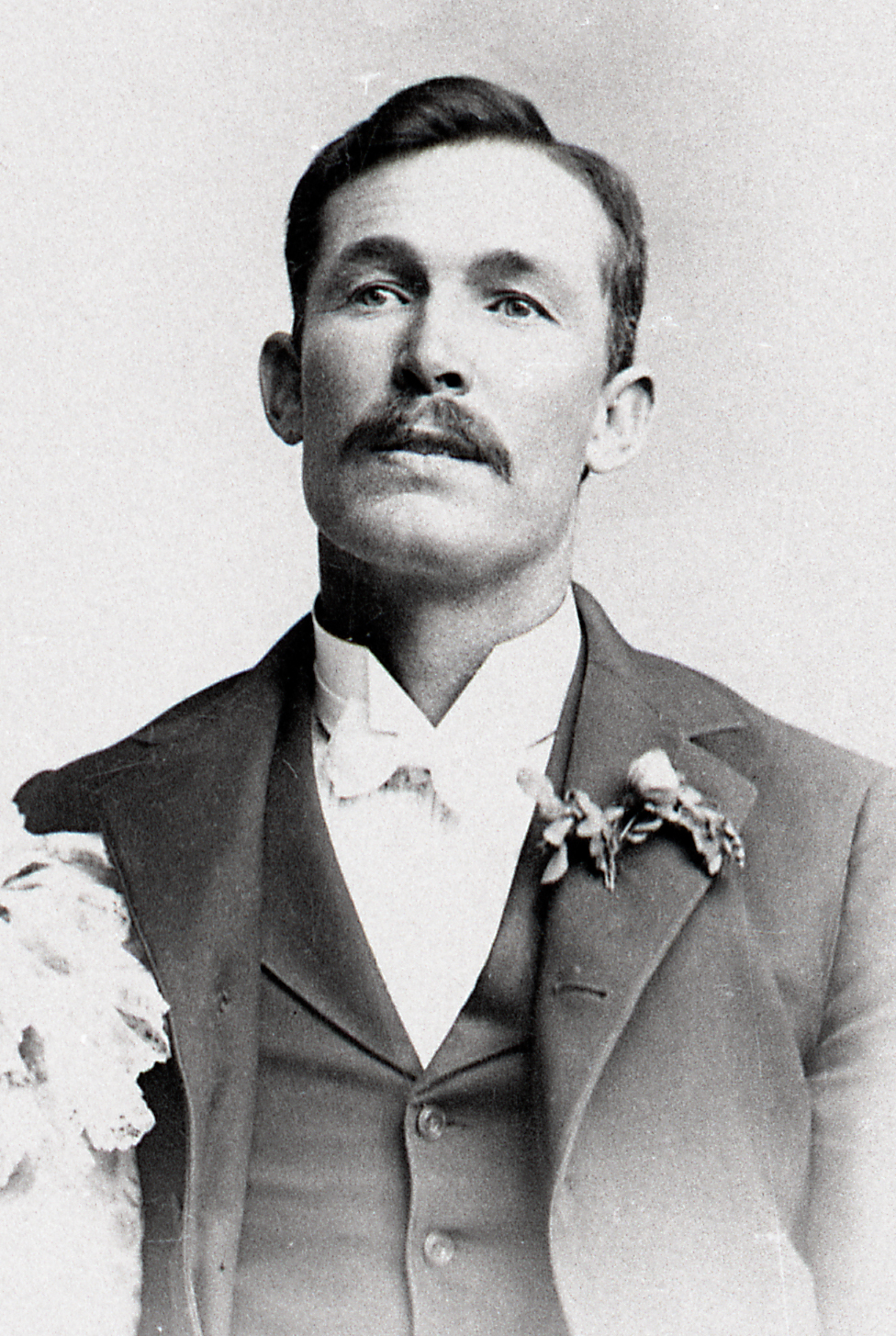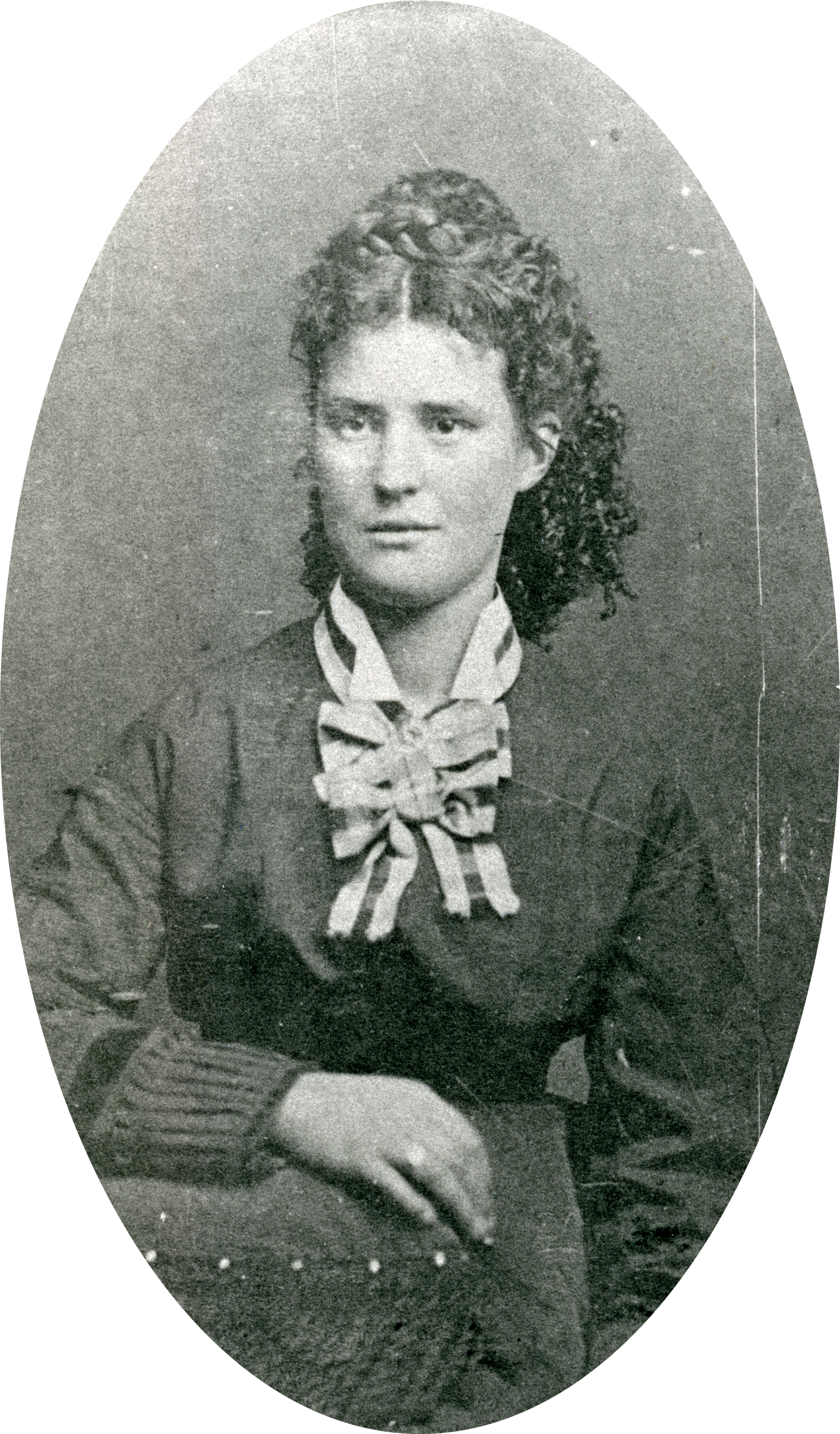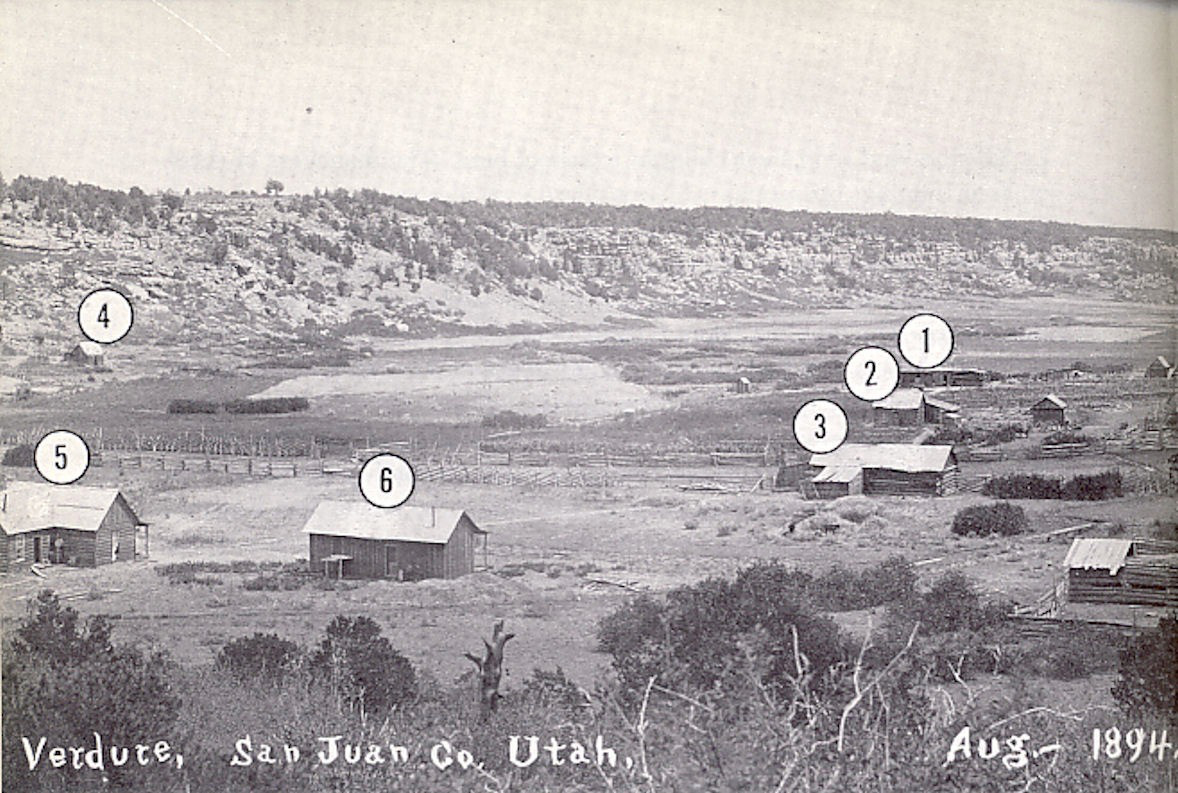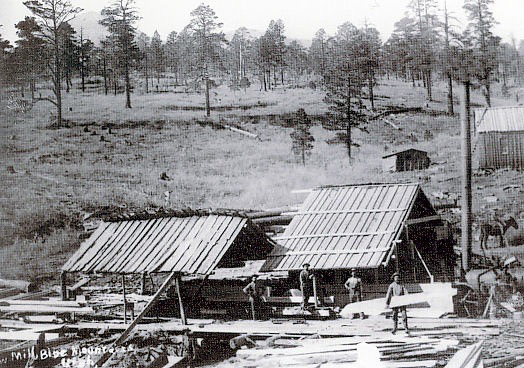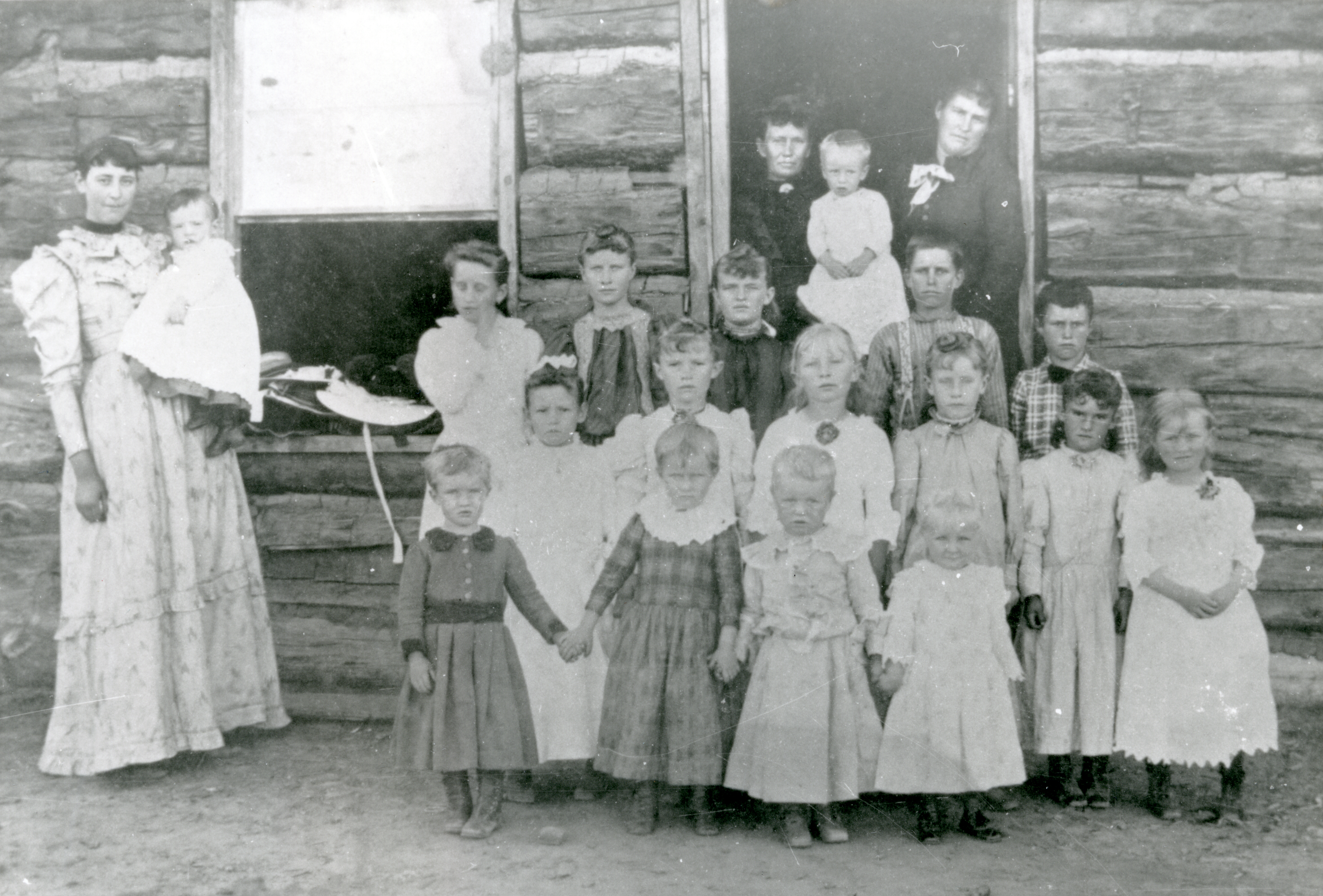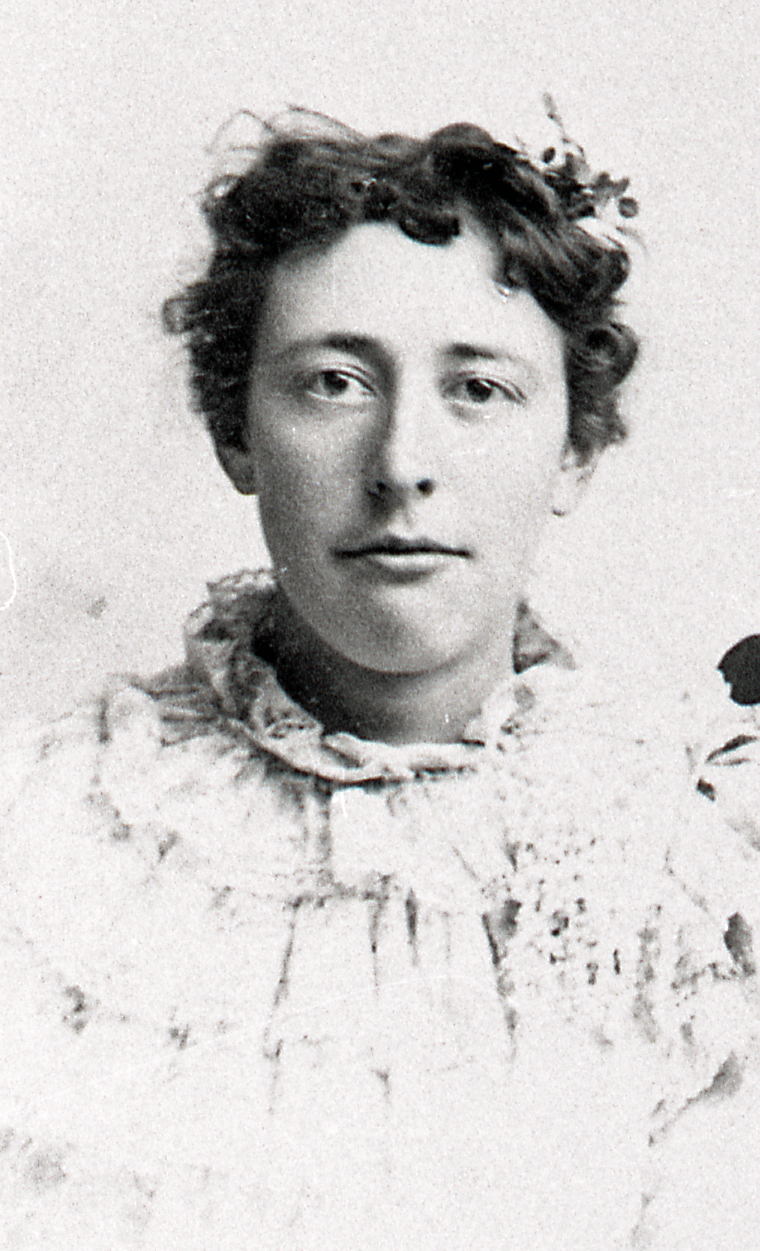Life Sketch of Ency Camilla Bayles
Ency Camilla Bayles
Born: 1 Mar 1864 at Parowan, Iron, Utah, USA
Parents: Herman Daggett Bayles, Sr., and Dorothea Jensen
Married: Parley Rogerson Butt, 24 Mar 1882 at St. George, Washington, Utah, USA
Died: 11 Oct 1897, Verdure, San Juan, Utah, USA
Parley Rogerson Butt
Born: 29 January 1862 at Parowan, Iron, Utah, USA
Parents: Urian Butt and Bridget Rogerson
Died: 22 Nov 1940 at Dove Creek, Delores, Colorado, USA
LIFE SKETCH OF ENCY CAMILLA BAYLES BUTT
The family into which Ency Camilla Bayles was born on 1 March 1864 was complex with one
father, Herman Daggett Bayles, and three "mothers." Herman had married Juliette Homan before
coming to Utah. They were friends with President Brigham Young and his wife, Zina. In 1855,
Juliette traveled to Salt Lake City to visit her friend, Zina D. Young, where she became ill.
Word was sent to Hanson in Parowan. During her worsening illness, a childless Danish widow, Anna
Oster, in the Young's employ, helped attend to her, and Juliette requested her to become Herman's wife should Juliette
die. Herman arrived too late to see Juliette before passed away, and President Young advised
him to take Anna as a wife as Juliette had asked. Herman was also sealed that day to Anna's
sister, Katrine, who had died. Anna bore Ole Hanson in 1857 whom she named for her first
husband who had died while serving a mission. In 1858, Herman took a plural wife, again a
Danish widow, Mette Marie Nielsdatter, who became known to the Bayles children as "Aunt
Mary," and who had no children of her own. Again in December 1858, he married Dorothea
Jensen also from Denmark. Herman and his wives Anna, Mary and Dorothea apparently lived under
one roof and worked together as a single family. Eventually, twelve children would join
this large family. Herman became bishop of Parowan Ward in 1869.
The children learned to work hard and work together for the benefit of the family. What
schooling as was available was taken advantage of, including being tutored by "aunts" and
siblings. The girls learned the work of the farm and household, and all contributed. During summers
they worked together at dairies established on the mountain.
Ency had caught the eye of Parley Butt, also of Parowan, before he had been called to go
to the San Juan to establish settlements there. She was fifteen at the time, and was nearly
eighteen when he returned for her in 1881.
They were married in St. George just after her birthday and returned to Bluff in company
with her brother Hanson Bayles, William Gurr, Bishop Jens Nielsen and Joe Nielsen, and
families. They arrived in Bluff May 21, 1882. When they arrived at Bluff, Ency, Parley,
and his two brothers, Willard and John went to Recapture and raised corn, watermelons and
vegetables. During the summer, Parley and Willard went to the mountains to obtain lumber.
They dug a hole, put saw logs across the top and with one standing in the hole and the other
above, they sawed lumber for floors.
That winter they lived in the fort in the north east corner next to Bishop Nielsen. On
January 28th, 1883, their first child was born.
During one of these first years, Parley and Willard ran a dairy at Cottonwood. Charles
Walton, Jr. helped them milk cows. Parley was the first to leave the fort and build a home,
a neat two room log cabin with a fire place in the north end. This was built on the northeast
corner of Block 11, across the street west from where Bishop Jens Nielsen afterwards built.
On May 1st, 1884, a son John Parley was born.
During the summer of 1885, Parley with his wife and two children and brother Willard
went to Elk mountains and ran a dairy. The spring where they dairied is still known as
Butt Spring. While there, Mancos Jim, a Ute, with about fifty of his followers declared,
"If you are not gone in ten days, when we return we will kill you," and then stopped and
asked, “You go?" Parley replied, “No, Mancos, no go."
In ten days they returned and found the party still there, where they remained until fall.
In the fall of 1886, Ency and three children went to Parowan with Fred Adams
and his mother. On their return, Herman Bayles, Ency's father, and the John Rogerson family,
also William Rogerson came back with them by way of Price. On Christmas Day Parley met them
at Verdure. He had a deer hanging on a tree with which to feed them. They reached Old Mustang
Camp Grounds on Christmas night. A heavy snow storm was failing, and in order to protect
Grandfather Bayles, Parley dug a square hole and put Grandfather's bed in it, and covered
the hole with a canvas tarpaulin. The next morning the party went on to Bluff, where they
remained for the winter. April 16th, 1886, Estella was born.
Ditch working and freighting continued until the spring of 1887, when Parley, with F. I. Jones,
Fred Adams, George Adams, and Charles Walton, Jr. were called to make a settlement at the
foot of the Blue Mountains. This mesa, later called Monticello, was to be the site of the
town. On March 12, 1887, these men surveyed a ditch for carrying irrigating water but found
it impossible to get it completed for that year's crop. Therefore, they decided to stay at
South Montezuma, later called Verdure, where the water was easily diverted from the creek.
On April 13th, N. A. Decker, F. I. Jones, and Parley Butt, turned the entire stream out
of South Montezuma Creek for irrigation purposes, and commenced plowing and planting. Soon
they returned to Bluff for their families, but before coming back Parley went to Durango
for a load of freight. The others waited for his return before moving to their new home.
During this summer, these men built a good log room, chicken coop, corrals and a cellar,
pig pens and stable and enclosed 140 acres with a good fence. The Adams family ran a dairy
up the Creek two miles west while F. I. Jones, Parley Butt and Alvin Decker remained at the
present site of Verdure, where these improvements were made.
They raised oats, wheat, barley, hay and vegetables. They lived in tents that summer and
in the fall they returned to Bluff for the winter.
At this same time, Mrs. George Adams gave birth at the Adams milk ranch to a little girl
which lived only 24 hours. A lonely little grave on the hill, shaded by a cedar tree, is
mute evidence to the lack of medical help. Parley was out riding with some of these cowboys
at this time. F. I. Jones took his family and the Butt family to the Adams ranch, where
Ency Butt stayed and cared for the infant all night. Her children cuddled around her in
fear, for that very day an Indian named "Old Wash" had come and said a white man had been
struck by lightning at the foot of the mountains about a mile further west. When Ency asked
if it was Parley, he said "No Savy". During the night Parley and several cowboys came in a
drenching rain storm and knocked on the cabin door. Ency with the mother and babe and her
children to worry over said, "Who is there?" What a relief to hear the words, "P. R. Butt
and some cowboys wanting to escape this downpour. They had found the dead Hopkins and decided
to find out how the settlers were, Parley intending to proceed down the Creek to his family.
Hopkins had been shot and the Indians afterwards told how they had caught him unawares and
shot him from the back. His grave still can be seen with a rock to mark the spot.
(Now fenced in)
After going to Bluff that fall, in December, Mary M. Jones, (Mrs. F. I. J.) gave birth
to a daughter, Minnie, and the following April, a daughter, Eva Dorothy, was born to Ency
Butt.
On the 31st of January, 1888, the wife of Hanson Bayles, in Bluff, gave birth to a
daughter and died. This brought great sorrow to Parley and his wife because they had been
so closely associated. She was Ency’s sister-in-law. In the spring of 1888, those called
to settle moved back. F. I. Jones and others came on to Monticello, but Parley Butt
remained at Verdure to farm the land they had broken up the year before. There were now
four children for Parley and Ency to provide for.
That summer he and his brother Willard ran a large dairy at Dodge, two miles south of
Verdure. Assisting them were several young people from Bluff. During the day, they fenced
and farmed at Verdure.
In October, Parley sent Ency and their four children to Parowan to her mother, as Ency's
health had become impaired and she needed rest and medical attention. They returned by train
and Parley met his family at the railroad at Thompson in October 1889, and brought them on
to Verdure, where they settled permanently. George Adams' family also settled here.
In 1890, Joseph Nielsen, a cousin to Ency Butt, built a two room log house which was
used as a store and filled with merchandise and Parley took charge of it. During the time
he took care of the store, he tried to feed at his home, free gratis, everyone who came
there. These would sometimes number as high as twenty people in a day. Also those passing
through Verdure stopped for meals and a night's lodging.
As Verdure grew, Ency was appointed as a School Trustee. In l893, the school was attended
by twelve children of the village, the teacher being Ency's younger sister. About this
time a Sunday School was organized and the first session was held in her home. Ency was
appointed as a teacher in this organization and she was also President of the Primary Association.
She was also President of the Relief Society.
While Ency Butt did all this work cheerfully, her young daughter grew to resent it, for
while the other children romped and played, she was continually helping with the cooking
and washing dishes. "Drudgery," the daughter said, "was a mild word!"
In her log house with a dirt roof she built a home with a soul, an abiding place for
affection, charity, sympathy,humility and faith. Could she have lived to help rear her
family of four boys and three girls (this was her most earnest and prayerful desire) the
happiness of herself and family would have continued into eternity. She longed for the
material things of life, but measured values with a higher standard and tried to impress
upon her children the necessity of a life clean and unspotted from the sins of the world.
Ency possessed a keen sense of justice and sympathetic understanding existed between
herself and her children. They obeyed her because she knew how to get obedience. She and her
husband took turns listening to their evening prayers, both would join in the evening frolic
and tuck them into bed. On one occasion when she and the children were gathering wild flowers
and studying the beauties of nature, they came to a knoll where lay the skeleton of a horse.
She remarked, "This would also make a good resting place for Christians". A lonely spot
in the trees, on the hill south of Verdure.
Not long afterward, on October ll, 1897 she died of Uremic Poisoning and when some of the
men went to find a burial place, they chose this very spot. They did not know why but her
children thought they knew. Just a few months before her death the family had moved into a
new home and she thought they were prepared to enjoy life to its fullest capacity, but
fate ruled otherwise.
Sources:
1. Ranney, Lucretia
Lyman. Herman Daggett Bayles -- Pioneer
2. Jones, E.
Lenora Butt. Life of Parley R. Butt
3.
Jones, E. Lenora. Life of Parley R. Butt, with illustrations added by Kermit Blake
